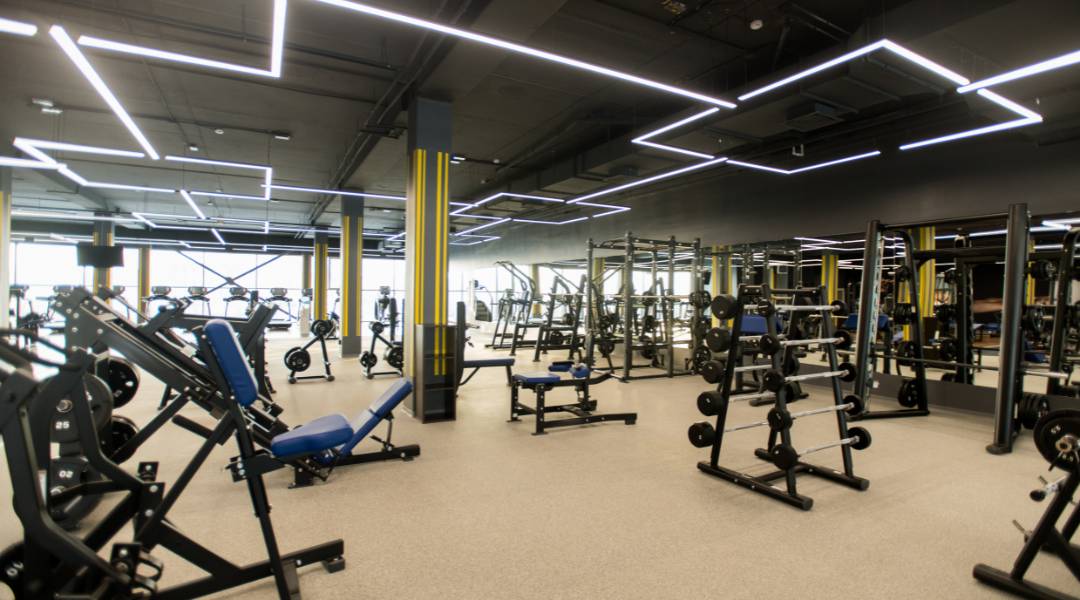- Launch Your Training Today! We're available 24/7 by Appointment Only.
- (615) 329-2747
- info@nextlevelfitness.com
Private Gyms Vs. Public Gyms: Which Is Right For You?

What Does a Strength and Conditioning Coach Do?
August 14, 2023
What Causes Muscle Imbalances and How to Fix Them
October 16, 2023Are you mulling over which type of gym suits your needs? It’s a common dilemma. Each offers distinct benefits geared toward different fitness goals.
You may desire the individual attention a smaller outfit like Nashville’s private gyms can provide. On the other hand, it might be that the communal atmosphere in larger establishments will get your adrenaline pumping higher! Your ultimate choice depends on what drives and motivates you to push toward achieving optimal health.
Benefits of Private Gyms
Let’s delve deeper into the perks of private gyms. Unlike public counterparts, these gems attract fitness enthusiasts who crave a specialized focus and direct supervision.
At such places, trainers deliver tailored services for refined results, justifying their premium costs over commercial establishments. Membership limits exist to guarantee personal attention during your workouts, therefore, fewer queues at equipment stations, with an added benefit being maintained hygiene levels due to lower footfall. Private gym members enjoy access to higher quality versions of standard fitness gear, plus the opportunity to mingle within tight-knit community circles founded on exclusivity.
Suppose you want to reach specific fitness goals with a professional’s help without worrying about using the same equipment as someone else or being in a crowded area. In that case, it is worth spending a little extra money.
Advantages of Public Gyms
Diving deeper into the assets of public gyms, their primary advantage lies in equipment diversity. Being larger establishments, they cater to a broad spectrum of needs with standard gear such as treadmills or free weights. For more mature facilities, you’ll find specialized machinery that aligns with your workout regime, too.
Accountability can be challenging in these arenas due to lackluster motivation often experienced by members. However, don’t let this discourage you! Instead, consider it an opportunity for self-discipline and personal growth.
One overlooked treasure found at many public gyms is group classes, an excellent chance to learn something new within a communal setting! It could be anything from yoga sessions to dance workouts, depending on the amenities offered.
The key takeaway: Public gymnasiums offer abundant resources catering to diverse goals, whether trying out various exercise machines for strength training or indulging in group activities to boost performance skills while nurturing community bonds.
Cost Comparison
Commercial gyms often come out ahead by offering lower fees. They can do this due to their broader user base and economies of scale in operation costs. It’s not uncommon for you to secure a monthly or yearly plan at these locations without burning a hole in your wallet!
However, ponder if it matches your fitness objectives before committing. On the flip side are private gyms where membership usually carries premium pricing. This stems from their exclusive nature and bespoke service focus, such as tailored training programs with direct supervision.
While they may be pricier than public facilities, remember that what looks costly upfront could result in better value over time, especially if specialized coaching is pivotal for achieving your goals. So when weighing up costs between types of gym, bear each specific pros and cons list well in mind! The right direction leans towards whichever aligns aptly with both budget allocation and exercise requirements.
Facilities Offered
You want options when you walk into your gym, right? Well, public gyms take the cake here. Their extensive array of equipment caters to a diverse crowd.
From treadmills and free weights for those who enjoy traditional workouts, they also offer specialized gear that wows seasoned fitness enthusiasts. However, if you’re more focused on targeted goals over various tools, private gyms might just be your cup of tea. Being smaller doesn’t mean offering less; it implies giving personalized attention with fewer but high-quality resources tailored to individual needs.
Moving onto accountability: joining any gym is easy until determination disappears after a few weeks. This often happens at larger facilities due to a lack personal interaction or motivation, making people feel undervalued for their efforts.
On the other hand, private health clubs offer personalized training sessions. This ensures a commitment to your fitness journey. Once you shake hands with a personal trainer, keeping up with the agreement is important, as every penny counts. Additionally, no one would want to disappoint someone who has dedicatedly waited for them!
In essence, both have unique perks, so choose wisely, understanding what suits you best according to specific requirements!
Accessibility and Hours of Operation
You might be wondering about accessibility. Public gyms, scattered throughout towns and cities alike, offer an advantage here. They’re usually close to your home or office, making them a convenient choice for fitness enthusiasts who need flexibility in their routine.
Regarding the hours of operation, public gyms typically fit into people’s varied schedules with offerings 24/7! You can attend early morning cardio sessions before sunrise or late-night strength training after work. Conversely, private facilities may not be on every corner of the city block nor adhere to round-the-clock timings.
They seek quality over quantity. Operating within specific time frames allows staff adequate time for maintenance tasks such as cleaning equipment and restocking supplies needed for specialized workout routines, which are common at these establishments.
Decision Making Factors
Your individual fitness goals greatly influence your gym choice. Personalized workout regimens are a forte of private gyms, courtesy of their smaller size and client-focused services. They may not boast an extensive range of equipment, but they excel in providing one-on-one assistance for enhanced training outcomes.
You get to work closely with personal trainers who keep you on track while addressing your needs. At public gyms, diversity is abundant, from gym machinery to group classes, including yoga or dance workouts. Depending upon the facilities available, there’s ample learning scope within a communal setting due to substantially larger dimensions, which allow room for such activities.
To decide between both requires self-evaluation. If commitment issues deter progress, paying more at private gyms can be worthwhile, thanks to its effective accountability mechanism, versus lower-priced memberships often leading to decreased motivation at public spaces. Yet, if variety intrigues you and peer learning fosters growth, large-scale operations should serve well.
Nonetheless, remember each has unique advantages catering to different requirements.
Reflect on your unique fitness path. Are you seeking social interaction or individualized attention? Public gyms offer community, but private facilities at Next Level Fitness prioritize personal goals with custom programs.
Remember, the key is not just to find a gym; it’s finding one that aligns best with your lifestyle and objectives.
Warning: Trying to access array offset on value of type null in /var/www/wp-content/themes/betheme/includes/content-single.php on line 286




